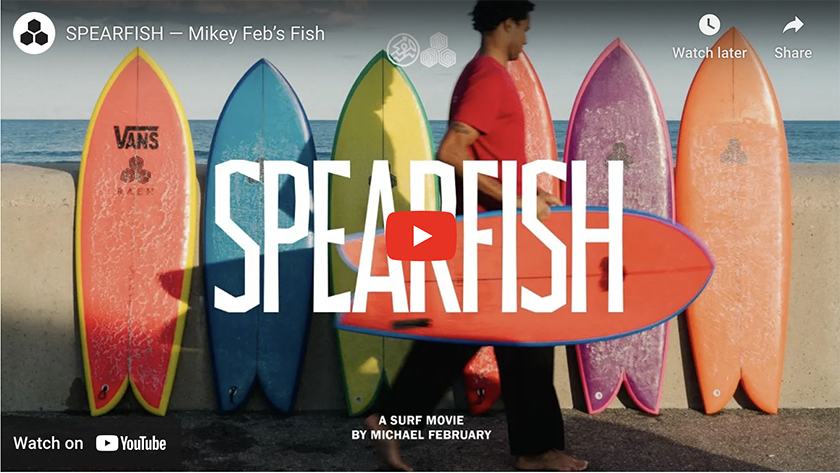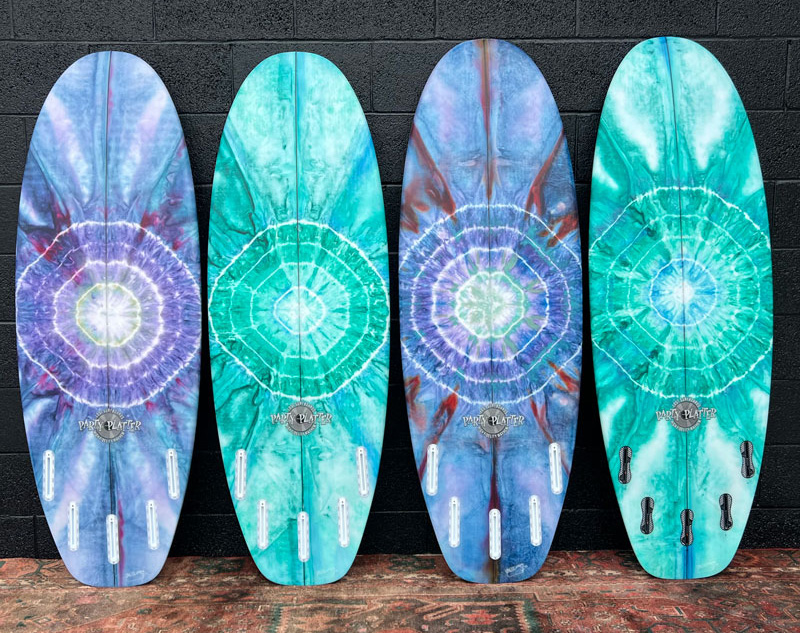from surfermag.com:
TAJ BURROW
HEIGHT: 5’9” (175 cm)
WEIGHT: 159 lbs (72 kg)
SHAPER: Matt “Mayhem” Biolos
LENGTH: 5’9 1/2”
WIDTH: 18.32”
THICKNESS: 2.22”
VOLUME: 24.2
TAIL: Squash
FINS: Thruster – FCS II with Medium Accelerators
BASE: 4.39″ / 111mm
DEPTH: 4.58″ / 116mm
AREA: 15.28″² / 98600mm²
SWEEP: 33.7º
FOIL: Flat
What board model was Taj riding?
It was a mix of his two models, The Whiplash and The Beach Buggy. For small Trestles, he thought The Whiplash was a little too curvy and too low volume, and The Beach Buggy a little too fat and playful.
Does this board differ much from what he has been riding all year?
Very little.
One thing that was pretty apparent about Taj’s surfing during the event was how quick he was able to turn in the pocket and project up the face. Was there anything specific about this board that helped him do that?
His boards generally have more curve and narrower tails and noses than most of the other boards I make. He rides some of the lowest volume, curviest boards on Tour and they lend themselves to quick surfing.
The conditions on finals day varied from waist high, high-tide slop in the morning to chest-high wedges for the Final. How do you think this board helped Taj adapt?
His boards for this event were 5’9” or 5’9 1/2” by 18.32” so they had a little more planning surface and a little shorter rail line than normal. Last year he won 2 events and rode a 5’10” x 18 1/4” at almost every event. But his normal 5’10” was definitely a bit long for how bad the waves were. These were probably the smallest, weakest waves of the whole year so far and worst than anything these guys have had to ride on the World Tour in a couple years. So we went smaller and a little wider.
The board had the new FCS II fin system. How does that system differ from others and do you see it becoming the go-to system for Taj?
I love the system. Performance wise, I don’t know if there is much of a difference between FCS II, FCS I, and Futures (the predominant systems). But the installation, ease of manufacturing, and ease of use for the surfer is really good. Its all positive from a mechanical, manufacturing, weight, and strength perspective. As far as affecting the performance, I don’t know if there is any difference there.
Now that the Tour is moving on to Europe, does he plan on switching up his equipment?
When you called earlier, he was here and we laid out 19 boards. He picked six to take with him and his trainer Johnny Gannon took another four round-pin step-up boards that he has had since the Pacific leg of the tour. He left another 11 or 12 behind to ship to Australia, and he will take some to Hawaii and on surf trips and that stuff.
What can the everyday surfer take away from this board design to improve his performance?
The boards these guys ride at Trestles aren’t that helpful unless you are somewhere between 17 to 30 years old and a really good surfer. In good, punchy, powerful waves on a surf trip or those odd really nice offshore mornings when the beachbreaks are firing, these boards work the best. If you want to emulate the surfing these guys are doing, these are the boards to do it. With that said, most of us need to be reasonable with what our abilities are and the waves we are surfing. For the most part, this style board is a little much for the typical surfer.
How was this board glassed?
Single 4oz S-Glass deck and the bottom is another 4oz hybrid warp. Also, we used polypropylene for the tail patch.
Is the polypropylene tail patch something you have been using on a lot of your boards?
Yeah, just for the last three or four months. We are going to roll it out next year for all our boards. We are moving away from carbon patches because everyone else is doing it. We are literally and figuratively reducing our carbon footprint.









